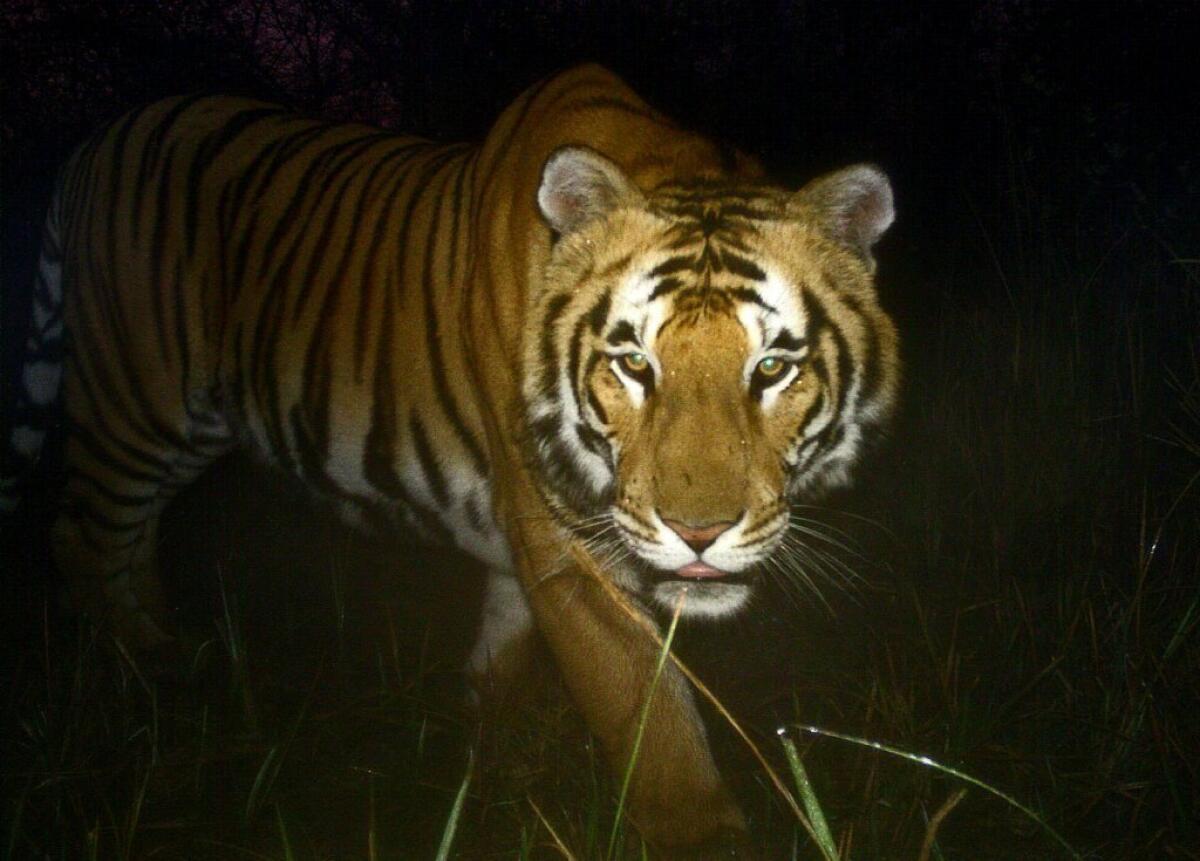Tiger population leaps in Nepal as countries fight to halt extinction

The number of tigers living in the wild in Nepal has leapt. A new survey shows Royal Bengal tigers now number 198 -- that’s 63% more than four years ago.
The country’s efforts are part of a global program to pull tigers back from the brink of extinction.
The government survey from Nepal was released Monday, on World Tiger Day, at a meeting of conservationists and wildlife experts in the nation’s capital, Katmandu, according to the French news agency, Agence France-Presse.
Experts chalked up the gains in Nepal to a crackdown on poaching and better management of the tigers’ habitat.
The wider tiger conservation program, known as TX2, was launched in 2010 by countries that have wild tigers. Their goal is to double the number of tigers by 2022, the next Year of the Tiger.
In 2010, there were as few as 3,200 tigers left in the wild, “putting the animals on the brink of extinction,” according to the World Wildlife Fund conservation group.
Nepal’s results “are an important milestone to reaching the global TX2 goal,” said Megh Bahadur Pandey, director-general of Nepal’s Department of National Parks and Wildlife Conservation, in a news release.
According to WWF, one of the world’s greatest concentrations of tigers is found in the Terai Arc Landscape. The region, believed to hold about 500 tigers, covers 600 miles and 15 protected areas in Nepal and India.
The two nations began a joint survey of tigers in January. The field survey included hundreds of cameras placed in protected areas to snap pictures of the tigers, AFP reported.
India will release its results from the survey separately. It will take “a few more months” for India to collect results on its tigers, believed to number more than 1,300 in huge protected areas, wildlife ecologist Maheswar Dhakal told AFP.
Then in December, results from both countries are expected to be published, according to the WWF, “to provide a landscape-wide estimation of tiger populations and a better understanding of tiger movements.”
A WWF official on Monday urged Nepal to protect the gains it has made.
“While we celebrate the positive results from this tiger survey, WWF calls on the government of Nepal to redouble efforts to protect these conservation gains that could easily be lost as human-tiger conflict increases and illegal wildlife trade empties our forests,” Nepal WWF representative Anil Manandhar said in the statement.
ALSO:
Possibly the biggest jewel heist in history
Pope Francis says gays should not be judged
In the new China, some seniors are helping other seniors
More to Read
Sign up for Essential California
The most important California stories and recommendations in your inbox every morning.
You may occasionally receive promotional content from the Los Angeles Times.











